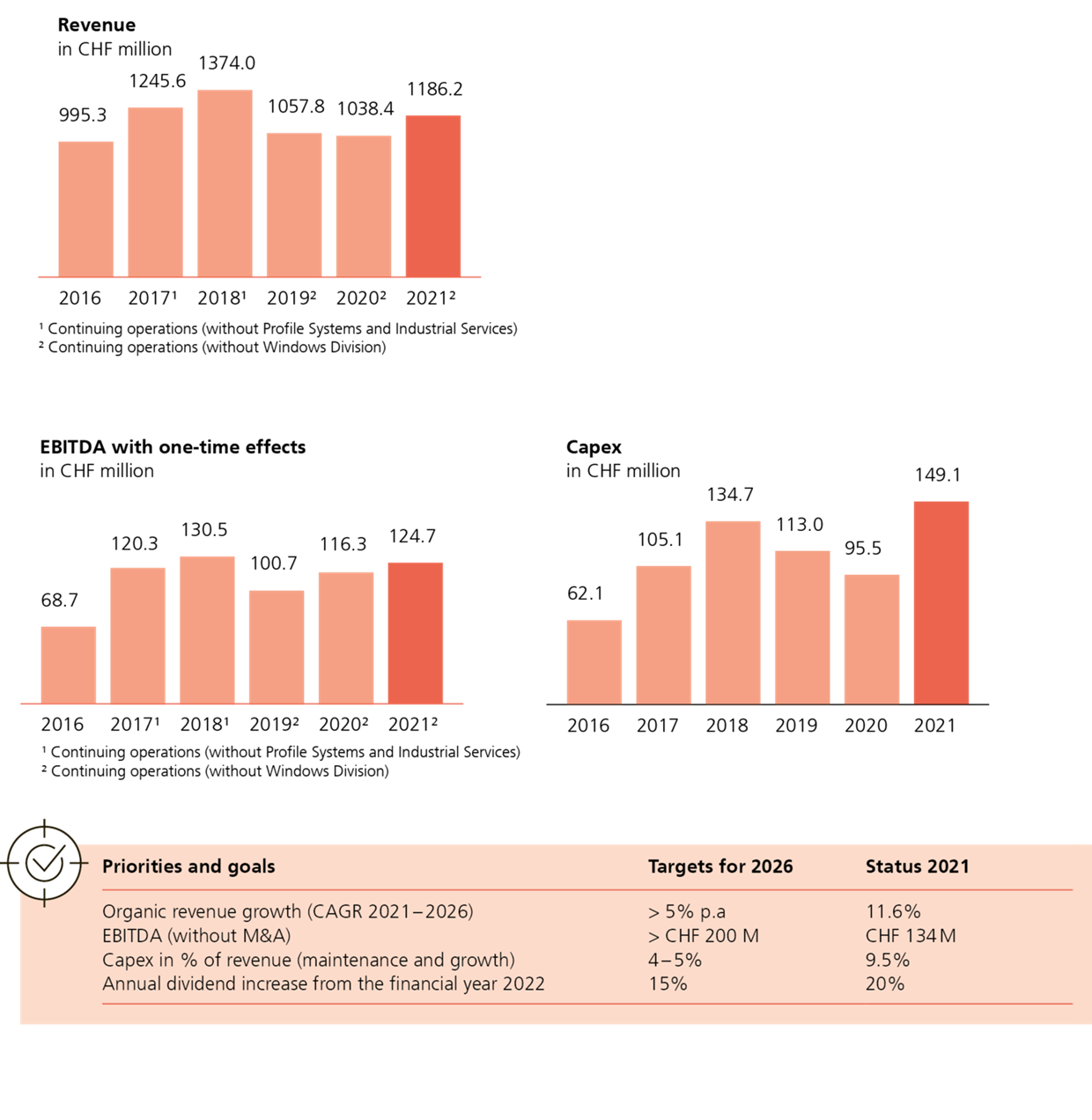- Sustainable business strategy and market orientation
- Heating, Ventilation and Air Conditioning Division
- Doors Division
Sustainable business strategy and market orientation
Following the sale of the Windows Division and the integration of the Sanitary Equipment Division in the Doors Division, Arbonia focused on the two divisions Heating, Ventilation and Air Conditioning (HVAC) and Doors in the reporting year 2021. These divisions are independently pushing the relevant megatrends of energy efficiency, urbanisation, digitisation, as well as automation.
Heating, Ventilation and Air Conditioning Division
The strategy of the HVAC Division clearly reflects the relevant megatrends of "CO2 reduction" as well as a "healthy and comfortable indoor climate". With regard to the development of the product portfolio, the focus is on new products for the growth markets while at the same time expanding the strong position in the established product groups. In the reporting year, targeted investments were made to underpin the product and production strategy based on the following four pillars:
- "Best in class" producti
- on for radiators
- Use of renewable energies with heat pump and battery storage products
- Radiant heating and cooling for modern buildings
- Ventilation and indoor air quality
The comprehensive climate protection package of the EU Commission, which has climate targets of 55% greenhouse gas savings by 2030 and climate neutrality by 2050, proves that the HVAC strategy is correct. For several years now as well as in the reporting year, the division has consistently pursued its strategy of being an innovative provider of holistic heating systems and their components: from modern heat generation and optimum heat exchange to energy storage for all types of buildings and application areas, both for the new construction and renovation markets.
With the construction of the new production plant in Opočno (CZ), the division is ideally positioned in the market for heat pumps, which is currently recording strong growth. In line with this strategy, a new resource-saving, highly efficient generation of air-to-water heat pumps for the lower and medium output range was launched in the reporting year. As an optimal addition to the heat pump range, a new hot water and layered buffer storage tank was also launched, which offers many advantages thanks to its modular design and high degree of pre-assembly. In addition, the division is currently developing a battery store based on sustainable redox flow technology, a future-oriented alternative to conventional lithium-ion batteries for both private and commercial residential construction (see "Arbonia brings the sun home" p. 80). This product offers convincing features such as non-flammability (an important safety aspect), a high number of charging cycles without loss of capacity, and attractive economic efficiency.
In addition to the four key pillars of the strategy, the HVAC Division is optimising its production footprint further by consolidating the production volume of steel panel radiators with the planned closure of the production plant in Tubbergen (NL). Other projects have also been initiated to reduce complexity and lower costs.
With the acquisition of the Serbian company Termovent as of 1 July 2021, the HVAC Division was not only able to expand its geographical presence in South-Eastern Europe but also significantly deepened its expertise in the area of air handling units. Cleanroom technology is the second focus of Termovent and rounds off the division's product portfolio in the commercial and industrial ventilation systems segment. In the first half of 2021, the HVAC Division also acquired the Spanish company Cicsa to strengthen its sales position in Spain and Portugal.
Doors Division
In the middle of the reporting year, the Sanitary Equipment Division with its shower doors and partitions was integrated into the Doors Division as the Glass Solutions Business Unit. The strategic logic of the integration lies in the better use of synergies in joint market development in contract sales on the one hand and in procurement on the other. In addition, the product range of the Wood Solutions Business Unit with functional and interior doors will be expanded to include shower doors, and in the medium term the glass doors and glass partitions area can be expanded for interiors.
The focus of the Wood Solutions Business Unit continues to be on the multi-year investment programme for increasing productivity and expanding capacity with the goal of improving delivery performance. Most of the investments flowed into the capacity expansion of the two German door plants Prüm and Garant. The largest items were the purchase of the property of Garant and the second high-bay warehouse, the combined heat and power plant (CHP), and the construction of the new frame plant near Prüm. Arbonia also invested in a coating robot at RWD Schlatter and started the planning for a raw materials and finished goods warehouse at this Swiss location.
After the investments, the Wood Solutions Business Unit can produce around 900,000 more doors with corresponding frames than before.
The division additionally invested in IT and the digitisation of processes. It is in the process of rolling out SAP S4 / Hana at the Wood Solutions Business Unit, for example. Harmonising the ERP system will make the future cooperation between the four door companies more efficient.
A very important milestone in the reporting year was the acquisition of Glasverarbeitungs-Gesellschaft Deggendorf mbH (GVG). The Glass Solutions Business Unit is thus increasing its vertical integration by sourcing processed single-pane safety glass within the Group now. The separation of GVG from the Saint-Gobain Group and its integration into the Glass Solutions Business Unit of the Doors Division is proceeding according to plan. This sets the stage for future growth and further process improvements.



